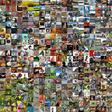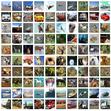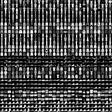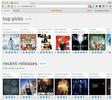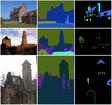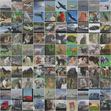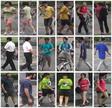Filter by Modality
Images
2661
Texts
2547
Videos
864
Audio
395
Medical
336
3D
303
Graphs
239
Time series
212
Tabular
170
Speech
165
RGB-D
160
Environment
123
Point cloud
105
Biomedical
96
LiDAR
71
RGB Video
65
Tracking
58
3d meshes
53
Biology
51
Actions
50
EEG
39
Stereo
39
Tables
38
Hyperspectral images
36
Music
35
MRI
32
Interactive
26
Physics
24
Dialog
23
6D
13
Midi
12
Ranking
10
Replay data
9
fMRI
8
Financial
7
Parallel
6
Cad
5
Lyrics
2
PSG
2
Filter by Task
Question Answering
360
Semantic Segmentation
311
Object Detection
261
Image Classification
240
Language Modelling
157
Text Generation
150
Text Classification
148
Classification
125
Named Entity Recognition (NER)
122
Pose Estimation
113
Visual Question Answering (VQA)
112
Action Recognition
105
Anomaly Detection
95
Reading Comprehension
95
Sentiment Analysis
93
Domain Adaptation
88
Speech Recognition
87
Text Summarization
87
Information Retrieval
82
Instance Segmentation
82
Natural Language Inference
77
Machine Translation
76
Image Retrieval
75
Relation Extraction
74
Natural Language Understanding
71
Depth Estimation
70
Node Classification
69
Image Generation
67
Autonomous Driving
66
Image Captioning
65
Data Augmentation
63
Link Prediction
63
Face Recognition
61
Object Tracking
61
2D Object Detection
57
2D Semantic Segmentation
57
Person Re-Identification
57
Multi-Task Learning
55
3D Reconstruction
54
Recommendation Systems
54
Common Sense Reasoning
52
Word Embeddings
52
3D Object Detection
48
Abstractive Text Summarization
48
3D Human Pose Estimation
46
Graph Classification
46
Emotion Recognition
45
Code Generation
43
Coreference Resolution
43
Medical Image Segmentation
43
Scene Understanding
43
Object Recognition
42
Optical Character Recognition (OCR)
42
Semantic Parsing
42
Temporal Action Localization
42
Video Understanding
42
Few-Shot Learning
41
Knowledge Graphs
41
Machine Reading Comprehension
41
Self-Supervised Learning
41
Visual Reasoning
41
Hate Speech Detection
39
Image Super-Resolution
39
Decision Making
38
Entity Linking
38
Misinformation
38
Multi-Object Tracking
37
Face Detection
36
Fine-Grained Image Classification
36
Audio Classification
34
Trajectory Prediction
34
Action Detection
33
Novel View Synthesis
33
Optical Flow Estimation
33
Panoptic Segmentation
32
Video Captioning
32
Video Question Answering
32
3D Semantic Segmentation
31
Dialogue Generation
31
Metric Learning
31
Stance Detection
31
Unsupervised Domain Adaptation
31
Video Retrieval
31
Action Classification
30
3D Pose Estimation
29
Activity Recognition
29
Continual Learning
29
Facial Expression Recognition (FER)
29
Image-to-Image Translation
29
Skeleton Based Action Recognition
29
Zero-Shot Learning
29
Document Summarization
28
Time Series Forecasting
28
Token Classification
28
Autonomous Vehicles
27
Emotion Classification
27
Multi-Label Classification
27
Neural Architecture Search
27
Scene Text Recognition
27
Monocular Depth Estimation
26
Open-Domain Question Answering
26
Part-Of-Speech Tagging
26
Sequence-to-sequence Language Modeling
26
Visual Object Tracking
26
Visual Tracking
26
Domain Generalization
25
Fake News Detection
25
Question Generation
25
Retrieval
25
Drug Discovery
24
Music Generation
24
NER
24
Video Prediction
24
Automatic Speech Recognition (ASR)
23
Few-Shot Image Classification
23
Music Information Retrieval
23
Object Counting
23
Unsupervised Anomaly Detection
23
2D Human Pose Estimation
22
Data-to-Text Generation
22
Hand Pose Estimation
22
Human-Object Interaction Detection
22
Relation Classification
22
Face Verification
21
Low-Light Image Enhancement
21
Out-of-Distribution Detection
21
Visual Odometry
21
Cross-Modal Retrieval
20
Denoising
20
Fairness
20
Handwriting Recognition
20
Image Clustering
20
Image Segmentation
20
Intent Detection
20
Scene Classification
20
Slot Filling
20
Time Series Analysis
20
Age Estimation
19
Crowd Counting
19
Meta-Learning
19
Molecular Property Prediction
19
Speech Synthesis
19
Super-Resolution
19
Task-Oriented Dialogue Systems
19
Text Simplification
19
Visual Localization
19
Visual Place Recognition
19
Visual Question Answering
19
Aspect-Based Sentiment Analysis (ABSA)
18
Cell Segmentation
18
DeepFake Detection
18
Imitation Learning
18
Language Identification
18
Quantization
18
Sign Language Recognition
18
Simultaneous Localization and Mapping
18
Sound Event Detection
18
Speech Emotion Recognition
18
Speech Enhancement
18
Text-to-Image Generation
18
Traffic Prediction
18
6D Pose Estimation
17
Action Recognition In Videos
17
Animal Pose Estimation
17
Binarization
17
Face Alignment
17
Face Anti-Spoofing
17
Graph Clustering
17
Graph Regression
17
Motor Imagery Decoding (left-hand vs right-hand)
17
Multimodal Deep Learning
17
Paraphrase Identification
17
SMAC+
17
Semantic Textual Similarity
17
Stereo Matching
17
Text-To-Speech Synthesis
17
Video Classification
17
3D Hand Pose Estimation
16
Action Segmentation
16
Cross-Lingual Transfer
16
Image Dehazing
16
Image Inpainting
16
Knowledge Graph Completion
16
Long-tail Learning
16
Math Word Problem Solving
16
Object Localization
16
Paraphrase Generation
16
Prompt Engineering
16
RGB Salient Object Detection
16
Robotic Grasping
16
Salient Object Detection
16
Speech Separation
16
Style Transfer
16
Time Series Classification
16
Video Object Segmentation
16
Visual Navigation
16
Active Learning
15
Document Classification
15
Facial Landmark Detection
15
Gaze Estimation
15
Grammatical Error Correction
15
Image Denoising
15
Image Enhancement
15
Mathematical Reasoning
15
Medical Diagnosis
15
Multiple Object Tracking
15
Node Classification on Non-Homophilic (Heterophilic) Graphs
15
Reinforcement Learning (RL)
15
Scene Recognition
15
Scene Text Detection
15
Translation
15
3D Action Recognition
14
Change Detection
14
Computed Tomography (CT)
14
Deblurring
14
Dependency Parsing
14
Fact Verification
14
Instruction Following
14
Joint Entity and Relation Extraction
14
Lane Detection
14
Multi-Document Summarization
14
Node Clustering
14
Self-Driving Cars
14
Semantic Role Labeling
14
Spoken Language Understanding
14
Text-To-SQL
14
Trajectory Forecasting
14
Word Sense Disambiguation
14
Zero-shot Text Search
14
3D Human Reconstruction
13
3D Instance Segmentation
13
Audio Source Separation
13
Clustering Algorithms Evaluation
13
Density Estimation
13
Emotion Recognition in Conversation
13
Event Extraction
13
Hand Gesture Recognition
13
Intent Classification
13
License Plate Recognition
13
Motion Synthesis
13
Open Information Extraction
13
Pedestrian Detection
13
Robot Navigation
13
Sarcasm Detection
13
Semi-Supervised Video Object Segmentation
13
Sentence Classification
13
Transfer Learning
13
Video Generation
13
Activity Detection
12
Binary Classification
12
Disentanglement
12
Entity Disambiguation
12
Gesture Recognition
12
Human Detection
12
Image Quality Assessment
12
Learning with noisy labels
12
Lesion Segmentation
12
Semi-Supervised Image Classification
12
Single-View 3D Reconstruction
12
Text Retrieval
12
Topic Models
12
Video Quality Assessment
12
Video Summarization
12
Video Super-Resolution
12
Vision and Language Navigation
12
Weakly Supervised Object Detection
12
Weather Forecasting
12
3D Classification
11
3D Face Reconstruction
11
3D Object Tracking
11
Automatic Speech Recognition
11
Community Detection
11
Conversational Response Selection
11
Dialogue State Tracking
11
Entity Resolution
11
Entity Typing
11
Image Registration
11
Image Restoration
11
Keypoint Detection
11
Logical Reasoning
11
Motion Forecasting
11
Multi-Label Text Classification
11
Multi-class Classification
11
Network Intrusion Detection
11
Open-Domain Dialog
11
Real-Time Semantic Segmentation
11
Relational Reasoning
11
Saliency Detection
11
Semantic Similarity
11
Semi-Supervised Semantic Segmentation
11
Sign Language Translation
11
Stochastic Optimization
11
Surface Normals Estimation
11
Video Frame Interpolation
11
Zero-Shot Video Question Answer
11
motion prediction
11
Acoustic Scene Classification
10
Answer Selection
10
Boundary Detection
10
COVID-19 Diagnosis
10
Code Search
10
Column Type Annotation
10
Contrastive Learning
10
Depth Completion
10
Dimensionality Reduction
10
Facial Attribute Classification
10
Federated Learning
10
Graph Embedding
10
Image Compression
10
Imputation
10
Named Entity Recognition
10
Nested Named Entity Recognition
10
Object Detection In Indoor Scenes
10
Outlier Detection
10
Referring Expression Segmentation
10
Sentence Embeddings
10
Small Object Detection
10
Table annotation
10
Time Series Prediction
10
Unsupervised Object Segmentation
10
Video Object Tracking
10
Virtual Try-on
10
3D Medical Imaging Segmentation
9
Abusive Language
9
Adversarial Robustness
9
Automatic Post-Editing
9
Citation Recommendation
9
Code Completion
9
Continuous Control
9
Conversational Question Answering
9
Cross-Lingual NER
9
Dialogue Understanding
9
Edge Detection
9
Few-Shot Audio Classification
9
Fine-Grained Image Recognition
9
Fraud Detection
9
Gait Recognition
9
Graph Matching
9
Handwriting generation
9
Head Pose Estimation
9
Incremental Learning
9
License Plate Detection
9
Material Recognition
9
Medical Image Classification
9
News Classification
9
Opinion Mining
9
Point Cloud Registration
9
Sentiment Classification
9
Speaker Diarization
9
Unsupervised Person Re-Identification
9
Video Inpainting
9
Video Object Detection
9
Video Recognition
9
Visual Dialog
9
2D Pose Estimation
8
3D Depth Estimation
8
Ad-hoc video search
8
Adversarial Attack
8
Audio Generation
8
Audio Tagging
8
Automated Theorem Proving
8
Causal Inference
8
Chart Question Answering
8
Code Translation
8
Color Image Denoising
8
Defect Detection
8
Discourse Parsing
8
Document Layout Analysis
8
ECG Classification
8
Entity Alignment
8
Event-based vision
8
Explanation Generation
8
Face Swapping
8
Fact Checking
8
Font Recognition
8
General Classification
8
Generalizable Person Re-identification
8
Generalized Zero-Shot Learning
8
Handwritten Text Recognition
8
Human Activity Recognition
8
Key Information Extraction
8
Medical Image Registration
8
Multi-Label Image Classification
8
Multi-Label Learning
8
Multi-agent Reinforcement Learning
8
Music Transcription
8
Online Multi-Object Tracking
8
Person Search
8
Pose Tracking
8
Referring Expression Comprehension
8
Scene Generation
8
Segmentation
8
Temporal Tagging
8
Text-to-Video Generation
8
Time Series
8
Tumor Segmentation
8
Unsupervised Video Object Segmentation
8
Vehicle Re-Identification
8
Video Segmentation
8
regression
8
3D Human Shape Estimation
7
3D Multi-Object Tracking
7
3D Object Recognition
7
3D Shape Reconstruction
7
Action Anticipation
7
Action Quality Assessment
7
AutoML
7
Bias Detection
7
Blind Super-Resolution
7
Change Point Detection
7
Chatbot
7
Chinese Reading Comprehension
7
Code Summarization
7
Colorectal Polyps Characterization
7
Conditional Image Generation
7
Data Integration
7
Dense Video Captioning
7
Dialogue Act Classification
7
Disaster Response
7
Dynamic Link Prediction
7
Electroencephalogram (EEG)
7
Event Detection
7
Explainable artificial intelligence
7
Food Recognition
7
Formation Energy
7
Human Part Segmentation
7
KG-to-Text Generation
7
Keyword Spotting
7
Knowledge Base Question Answering
7
Multimodal Activity Recognition
7
Multimodal Emotion Recognition
7
Multiple-choice
7
Multiview Detection
7
Passage Retrieval
7
Physical Simulations
7
Product Recommendation
7
Program Repair
7
Remote Sensing Image Classification
7
Robust Object Detection
7
Single Image Dehazing
7
Skin Lesion Classification
7
Source Code Summarization
7
Stance Classification
7
Table Detection
7
Text Segmentation
7
Traffic Sign Recognition
7
Translation deu-eng
7
Translation eng-deu
7
Unsupervised Semantic Segmentation with Language-image Pre-training
7
Video Anomaly Detection
7
Video Grounding
7
Video Semantic Segmentation
7
Zero-Shot Transfer Image Classification
7
3D Absolute Human Pose Estimation
6
3D Face Animation
6
3D Object Classification
6
3D Object Reconstruction
6
3D Part Segmentation
6
3D Point Cloud Classification
6
6D Pose Estimation using RGB
6
6D Pose Estimation using RGBD
6
Argument Mining
6
Atari Games
6
Audio-Visual Speech Recognition
6
Band Gap
6
Bayesian Inference
6
Body Detection
6
Breast Cancer Detection
6
Camouflaged Object Segmentation
6
Click-Through Rate Prediction
6
Code Classification
6
Code Repair
6
Colorization
6
Compositional Zero-Shot Learning
6
Constituency Parsing
6
Cross-Domain Few-Shot
6
Cross-Lingual Question Answering
6
Dialogue Evaluation
6
Dictionary Learning
6
Egocentric Pose Estimation
6
Emotion Recognition in Context
6
Environmental Sound Classification
6
Extreme Summarization
6
Facial Emotion Recognition
6
Few-Shot Object Detection
6
Gesture Generation
6
Graph Learning
6
Heart rate estimation
6
Hierarchical Multi-label Classification
6
Human Interaction Recognition
6
Hyperspectral Image Classification
6
Lesion Classification
6
Medical Visual Question Answering
6
Motion Estimation
6
Multi-Person Pose Estimation
6
Multiple Instance Learning
6
Multivariate Time Series Forecasting
6
Multivariate Time Series Imputation
6
Person Identification
6
Real-Time Object Detection
6
Filter by Language
English
2882
Chinese
324
German
169
French
145
Spanish
122
Russian
111
Arabic
84
Japanese
83
Italian
79
Portuguese
75
Hindi
68
Vietnamese
57
Korean
54
Turkish
50
Bengali
45
Persian
44
Tamil
41
Dutch
40
Polish
37
Czech
34
Indonesian
34
Danish
31
Finnish
30
Telugu
30
Romanian
29
Multilingual
28
Urdu
27
Marathi
25
Hungarian
23
Swedish
23
Malayalam
22
Mandarin Chinese
22
Thai
22
Greek
21
Gujarati
20
Basque
19
Estonian
19
Hebrew
19
Bulgarian
18
Kannada
18
Punjabi
17
Slovak
16
Ukrainian
16
Swahili
15
Catalan
14
Croatian
14
Norwegian
14
Slovenian
14
Latvian
13
Assamese
12
Iranian Persian
12
Kazakh
12
Lithuanian
12
Serbian
12
Amharic
11
Kurdish
10
Albanian
9
Armenian
9
Irish
9
Maltese
9
Oriya (macrolanguage)
9
Welsh
9
American Sign Language
8
Georgian
8
Mongolian
8
Sanskrit
8
Sinhala
8
Tagalog
8
Yoruba
8
Azerbaijani
7
Breton
7
Burmese
7
Hausa
7
Icelandic
7
Igbo
7
Macedonian
7
Serbo-Croatian
7
Somali
7
Uzbek
7
Afrikaans
6
Central Kurdish
6
Esperanto
6
Galician
6
Guarani
6
Haitian
6
Odia
6
Oromo
6
Sindhi
6
Bambara
5
Belarusian
5
Egyptian Arabic
5
Filipino
5
Javanese
5
Latin
5
Malagasy
5
Malay (individual language)
5
Nepali (macrolanguage)
5
Norwegian Bokmål
5
Norwegian Nynorsk
5
Quechua
5
Scottish Gaelic
5
Standard Arabic
5
Sundanese
5
Tibetan
5
Tigrinya
5
Wolof
5
Bangala
4
Cebuano
4
Central Khmer
4
Chechen
4
Dhivehi
4
Fulah
4
Ganda
4
Iloko
4
Kabyle
4
Kinyarwanda
4
Kirghiz
4
Lao
4
Lingala
4
Nigerian Pidgin
4
Nyanja
4
South Azerbaijani
4
Tatar
4
Upper Sorbian
4
Western Panjabi
4
Aragonese
3
Bashkir
3
Bavarian
3
Bishnupriya
3
Bosnian
3
Chuvash
3
Erzya
3
Faroese
3
Fon
3
German Sign Language
3
Goan Konkani
3
Maithili
3
Malay (macrolanguage)
3
Romansh
3
Russia Buriat
3
Swati
3
Swiss German
3
Tajik
3
Tsonga
3
Tswana
3
Twi
3
Uighur
3
Waray (Philippines)
3
Xhosa
3
Yiddish
3
Argentine Sign Language
2
Asturian
2
Avaric
2
Aymara
2
Bangladeshi Sign Language
2
Bhojpuri
2
Central Bikol
2
Cherokee
2
Church Slavic
2
Cornish
2
Dimli (individual language)
2
Eastern Mari
2
Ewe
2
Gothic
2
Gulf Arabic
2
Ido
2
Interlingue
2
Inuktitut
2
Jejueo
2
Kalaallisut
2
Kalmyk
2
Karachay-Balkar
2
Komi
2
Komi-Permyak
2
Lezghian
2
Limburgan
2
Livvi
2
Lojban
2
Lombard
2
Low German
2
Lower Sorbian
2
Luo (Kenya and Tanzania)
2
Luxembourgish
2
Manipuri
2
Manx
2
Maori
2
Mazanderani
2
Minangkabau
2
Mingrelian
2
Mirandese
2
Modern Greek
2
Moksha
2
Moroccan Arabic
2
Naxi
2
Neapolitan
2
Nepali (individual language)
2
Newari
2
Northern Frisian
2
Northern Kurdish
2
Northern Luri
2
Northern Sami
2
Occitan (post 1500)
2
Ossetian
2
Pampanga
2
Pedi
2
Piemontese
2
Pushto
2
Rundi
2
Sardinian
2
Shona
2
Sichuan Yi
2
Sicilian
2
Southern Sotho
2
Swiss-German Sign Language
2
Tai
2
Tosk Albanian
2
Turkish Sign Language
2
Turkmen
2
Tuvinian
2
Udmurt
2
Venetian
2
Volapük
2
Walloon
2
Western Frisian
2
Western Mari
2
Wu Chinese
2
Yakut
2
Yue Chinese
2
Zulu
2
Abkhazian
1
Achinese
1
Adyghe
1
Afar
1
Akan
1
Akkadian
1
Akuntsu
1
Ancient Greek
1
Ancient Hebrew
1
Apurinã
1
Arpitan
1
Assyrian Neo-Aramaic
1
Banjar
1
Bemba (Zambia)
1
Bislama
1
Bodo (India)
1
Buginese
1
Central Pashto
1
Chamorro
1
Chavacano
1
Cheyenne
1
Choctaw
1
Chukot
1
Congo Swahili
1
Coptic
1
Corsican
1
Cree
1
Creek
1
Crimean Tatar
1
Dogri (macrolanguage)
1
Dzongkha
1
Extremaduran
1
Fiji Hindi
1
Fijian
1
Friulian
1
Gagauz
1
Gan Chinese
1
Geez
1
Gilaki
1
Greek Sign Language
1
Hakha Chin
1
Hakka Chinese
1
Halh Mongolian
1
Hawaiian
1
Herero
1
Hiri Motu
1
Interlingua (International Auxiliary Language Association)
1
Inupiaq
1
Jamaican Creole English
1
Kabardian
1
Kabuverdianu
1
Kachin
1
Kanuri
1
Kara-Kalpak
1
Karelian
1
Kashmiri
1
Kashubian
1
Khunsari
1
Kikuyu
1
Komi-Zyrian
1
Kongo
1
Krio
1
Kuanyama
1
Kölsch
1
Ladino
1
Lak
1
Latgalian
1
Ligurian
1
Literary Chinese
1
Lozi
1
Lunda
1
Luo (Cameroon)
1
Lushai
1
Marshallese
1
Mbyá Guaraní
1
Mesopotamian Arabic
1
Min Dong Chinese
1
Modern Greek (1453-)
1
Mundurukú
1
Najdi Arabic
1
Narom
1
Nauru
1
Navajo
1
Nayini
1
Ndonga
1
Nigerian Fulfulde
1
North Azerbaijani
1
North Levantine Arabic
1
Northern Uzbek
1
Novial
1
Official Aramaic (700-300 BCE)
1
Old English (ca. 450-1100)
1
Old French
1
Old Russian
1
Old Turkish
1
Pali
1
Pangasinan
1
Papiamento
1
Pennsylvania German
1
Pfaelzisch
1
Picard
1
Pitcairn-Norfolk
1
Plateau Malagasy
1
Pontic
1
Rajasthani
1
Rusyn
1
Samoan
1
Sango
1
Saterfriesisch
1
Scots
1
Shan
1
Silesian
1
Skolt Sami
1
Soi
1
South Levantine Arabic
1
Southern Pashto
1
Sranan Tongo
1
Standard Latvian
1
Swahili (macrolanguage)
1
Swedish Sign Language
1
Tahitian
1
Tetum
1
Tok Pisin
1
Tonga (Tonga Islands)
1
Tonga (Zambia)
1
Tulu
1
Tumbuka
1
Tunisian Arabic
1
Tupinambá
1
Venda
1
Veps
1
Vlaams
1
Vlax Romani
1
Votic
1
Warlpiri
1
West Central Oromo
1
Zaza
1
Zeeuws
1
Zhuang
1
Dogri (individual language)
0
Northern Huishui Hmong
0
Portuguse
0
Saidi Arabic
0
Santali
0

